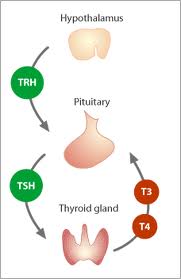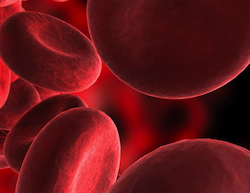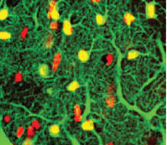Maternal Smoking and Drinking Linked to ADHD in Kids with Bipolar Illness

At the 57th Annual Meeting of the American Academy of Child and Adolescent Psychiatry (AACAP) in New York in October 2010, Tim Wilens of Massachusetts General Hospital (MGH) presented data that maternal smoking and alcohol use during pregnancy both appeared to increase the risk of comorbid attention deficit hyperactivity disorder (ADHD) in children with bipolar disorder.
Genetic Basis for Childhood Onset of Bipolar Illness
 Eric Mick of Massachusetts General Hospital reviewed the latest genetics data on bipolar disorder and reported at the 57th Annual Meeting of the American Academy of Child and Adolescent Psychiatry that 20% of people with childhood-onset bipolar illness have a first-degree relative with bipolar disorder, while only 10% of those with adult-onset bipolar disorder have a first-degree relative with bipolar disorder. These data are consistent with others that indicate that there is an increased genetic/familial risk for bipolar disorder in childhood- compared with adult-onset illness.
Eric Mick of Massachusetts General Hospital reviewed the latest genetics data on bipolar disorder and reported at the 57th Annual Meeting of the American Academy of Child and Adolescent Psychiatry that 20% of people with childhood-onset bipolar illness have a first-degree relative with bipolar disorder, while only 10% of those with adult-onset bipolar disorder have a first-degree relative with bipolar disorder. These data are consistent with others that indicate that there is an increased genetic/familial risk for bipolar disorder in childhood- compared with adult-onset illness.
Mick reviewed a number of findings that suggest that alterations in genes involved in intracellular signaling and in the development and maintenance of long-term memory may also be implicated in bipolar disorder. Classical genome-wide association studies (GWAS), in which a link between any human gene and bipolar disorder is sought, have not found any genes with a large effect or a high predictive value for bipolar illness. In the meantime, other strategies for finding genetic links to bipolar disorder are being pursued, including studying rare gene variants. There is some evidence that these variants occur more frequently in children with early onset bipolar illness.
Cognitive Deficits in Bipolar Children
At a symposium on new research on juvenile bipolar disorder at the meeting of the American Academy of Child and Adolescent Psychiatry (AACAP) in 2010, Ronna Fried from Massachusetts General Hospital reviewed executive function deficits that occur in children with bipolar disorder. These include difficulties in planning, working memory, response inhibition, emotional control, initiative, self-regulation, and the ability to shift focus when required.
Fried and her research group found that comorbid ADHD occurred in 69% of bipolar I children compared with 16% of controls. (ADHD involves many of the same executive function difficulties that occur in bipolar disorder—poor attention and difficulties with learning and memory.) Executive function deficits were observed in 45% of bipolar I patients compared with 17% of controls. Children with bipolar disorder who had executive function deficits had lower IQs, more difficulty reading, lower social functioning, decreased occupational functioning on long-term followup, and overall poor outcome of their illness.
Editor’s Note: These data emphasize the importance of cognitive remediation techniques in those who have major executive function deficits. Dr. Fried emphasized that rehabilitation works, and indicated its use is important for these children in order to moderate the otherwise more severe course of illness they may experience compared with those without executive function deficits.
Vitamin D Deficiency Found in Adolescents with Serious Mental Disorders
 Barbara Gracious of the University of Rochester Medical Center reported at the 57th Annual Meeting of the American Academy of Child and Adolescent Psychiatry (AACAP) in October 2010 that adolescents with severe mental illness are more likely to have vitamin D deficiency than adolescents in the general population are. Gracious et al. collected information from severely mentally ill teens in inpatient and day hospital settings. Low vitamin D levels (i.e. those below 30 ng/ml) were found in 74% of these children. In addition, those patients who were vitamin D deficient were more than three times as likely to have a psychotic element to their illness.
Barbara Gracious of the University of Rochester Medical Center reported at the 57th Annual Meeting of the American Academy of Child and Adolescent Psychiatry (AACAP) in October 2010 that adolescents with severe mental illness are more likely to have vitamin D deficiency than adolescents in the general population are. Gracious et al. collected information from severely mentally ill teens in inpatient and day hospital settings. Low vitamin D levels (i.e. those below 30 ng/ml) were found in 74% of these children. In addition, those patients who were vitamin D deficient were more than three times as likely to have a psychotic element to their illness.
Editor’s note: These data suggest the potential importance of assessing vitamin D levels during the diagnosis of patients with childhood-onset bipolar disorder, particularly if there is associated psychotic symptomatology.
Thyroid Abnormalities Common in Childhood Mental Illness
 At the 57th Annual Meeting of the American Academy of Child and Adolescent Psychiatry (AACAP) in October 2010, Maria Gariup of Barcelona, Spain reported that thyroid abnormalities are common among children with major psychiatric diagnoses and, in particular, high levels of thyroid stimulating hormone (TSH) are common among those with bipolar illness.
At the 57th Annual Meeting of the American Academy of Child and Adolescent Psychiatry (AACAP) in October 2010, Maria Gariup of Barcelona, Spain reported that thyroid abnormalities are common among children with major psychiatric diagnoses and, in particular, high levels of thyroid stimulating hormone (TSH) are common among those with bipolar illness.
Editor’s Note: These findings may relate to reports of a greater incidence of anti-thyroid antibodies in adult patients with bipolar disorder compared with many other psychiatric groups.
Lower Blood Iron Levels Linked to More Severe ADHD
 At the 57th Annual Meeting of the American Academy of Child and Adolescent Psychiatry (AACAP) in October 2010, Chadi Calarge of the University of Iowa’s Carver College of Medicine reported that among children with attention-deficit hyperactivity disorder (ADHD), blood iron levels were inversely correlated with the severity of ADHD symptoms. That is, those with lower iron levels in their blood had greater severity of ADHD symptomatology and, in addition, required higher doses of stimulants to achieve effective results.
At the 57th Annual Meeting of the American Academy of Child and Adolescent Psychiatry (AACAP) in October 2010, Chadi Calarge of the University of Iowa’s Carver College of Medicine reported that among children with attention-deficit hyperactivity disorder (ADHD), blood iron levels were inversely correlated with the severity of ADHD symptoms. That is, those with lower iron levels in their blood had greater severity of ADHD symptomatology and, in addition, required higher doses of stimulants to achieve effective results.
Editor’s note: It would appear clinically useful to check blood iron levels in patients with ADHD symptomatology, particularly when symptoms are severe or when the illness requires very high doses of stimulants to achieve therapeutic effects.
Stress or Ultrasonic Stimulation In Utero Could Alter Neuronal Migration Patterns
At the 57th Annual Meeting of the American Academy of Child and Adolescent Psychiatry (AACAP) in October 2010, Hanna Stevens of the Yale Child Study Center reported that rat pups in utero who experienced prenatal stress (i.e., when the pregnant rat was restrained during the last week of pregnancy) had fewer neurons containing GABA, which is the main inhibitory neurotransmitter in the brain, than control pups. This deficit may reflect a delay in the neurons’ ventral to rostral migration or in their maturation. These deficits in GABAergic neurons following prenatal stress are noteworthy in light of the deficits in GABAergic neurons found in adults with bipolar illness. This research is unusual in that it suggests that prenatal stress can affect neuronal numbers.
Editor’s Note: Stevens was aware of data from the renowned neuroanatomist Pasco Rakic, also at Yale. Some years ago Rakic reported that ultrasonic stimulation of the brain had major disorganizing effects on neuronal migration in the primate brain. Since prenatal stress and ultrasonic stimulation can affect neuronal migration, and dysregulation of neuronal migration has been implicated in autism, these data raise the hypothesis (so far untested) that one possible reason for the recent increases in the incidence of autism is the increased use of sonograms to monitor various aspects of prenatal growth and development during pregnancy. These preclinical findings deserve to be further studied for their potential relevance to humans.
Thalamic Volume and Neural Connectivity in Autism
 Ish Bhalla reported at the 57th Annual Meeting of the American Academy of Child and Adolescent Psychiatry (AACAP) in October 2010 that children with autism have greater thalamic volume than normal controls. Other posters presented at the meeting showed that patients with autism spectrum disorders have connectivity abnormalities, with increased connectivity of neurons to other nearby neuronal groups and decreased connectivity of neurons to areas of the brain at a greater distance.
Ish Bhalla reported at the 57th Annual Meeting of the American Academy of Child and Adolescent Psychiatry (AACAP) in October 2010 that children with autism have greater thalamic volume than normal controls. Other posters presented at the meeting showed that patients with autism spectrum disorders have connectivity abnormalities, with increased connectivity of neurons to other nearby neuronal groups and decreased connectivity of neurons to areas of the brain at a greater distance.
Editor’s Note: These findings echo reports that the corpus callosum, the main structure connecting neurons across the two hemispheres of the brain, is smaller in autism. In addition, other investigators have reported abnormalities in cortical column structure in autism.
Interestingly, the findings of increased volume and altered connectivity may even be reflected in measurements of brain and head size. A substantial literature supports the observations that children with autism have greater initial head size and growth of their heads compared with the normal infant population.
Maternal Depression May Affect Child’s Brain
At the 57th Annual Meeting of the American Academy of Child and Adolescent Psychiatry (AACAP) in October 2010, Dana Serino of Columbia University reported that mothers who experienced depression while pregnant had children with increased size in both their left and right medial temporal gyri, parts of the brain that may be responsible for judging distance, recognizing faces, and understanding word meaning.
Editor’s Note: These data extend preclinical studies that have shown that a variety of prenatal stressors are capable of exerting substantial effects on biology and behavior in children. In addition to affecting medial temporal gyrus volume, prenatal depression has also been shown to have effects on behavior of newborns, indicating that depression during pregnancy may have adverse effects on both the mother and the newborn.
Diet, Depression, Inflammation and the Brain
We’ve been posting recently about diet and about treatments that are weight-neutral. There is evidence that diet, inflammation and depression are all linked. Epidemiological studies by Joe Hiblen have shown that in countries whose populations eat more fish and thus have high levels of omega-3 fatty acids in their diet, there is lower incidence of depression, suicide, and cardiovascular disease such as heart attacks and strokes. This may be because the major omega-3 fatty acids, EPA and DHA, are anti-inflammatory, and inflammation has been linked to depression. EPA inhibits the enzymes phospholipase A2 and cyclo-oxygenase-2 (COX-2), and their subsequent inflammatory effects on cytokines. DHA inhibits the pro-inflammatory cytokine IL6.
Researcher John Davis recently reviewed relevant literature and found that diets high in anti-inflammatory omega-3 fatty acids are associated with lower incidence of depression, cardiovascular disease, and markers of inflammatory processes. Conversely, diets high in fat and in inflammatory omega-6 fatty acids are associated with obesity, depression, and cardiovascular disease.
Various studies have shown the links between inflammation and depression. For example, when patients are given alpha-interferon to treat viral hepatitis, there is a subsequent increase in inflammatory cytokines IL-1 and IL-6, and depression often follows. Also, depressed patients have an increased ratio of pro-inflammatory to anti-inflammatory cytokines in their blood.
Another sign of a link between bipolar illness and inflammation can be seen in biochemical analysis of brain specimens obtained at autopsy. Researcher Rapaka Rao in the laboratory of Stanley Rapoport at the National Institute on Aging at the National Institutes of Health in Bethesda, Maryland, has reported that increased markers of neuronal inflammation and excitotoxicity were found in the brains of people who had had bipolar disorder. Phospholipase A2 and COX-2 were significantly elevated in the brains of those with bipolar illness and those with schizophrenia compared with controls. Pro-inflammatory interleukin I was also significantly increased in the brains of those who had had either illness. Read more





